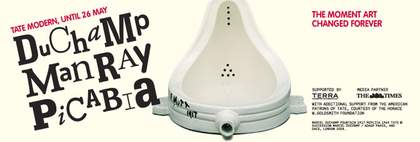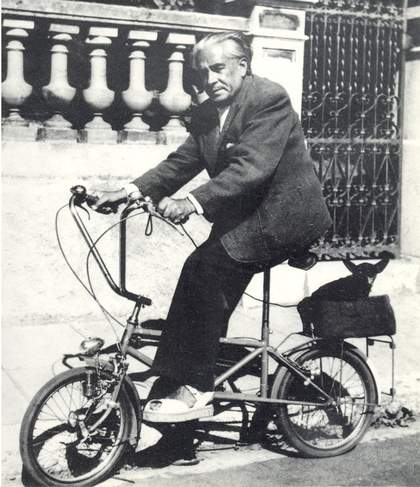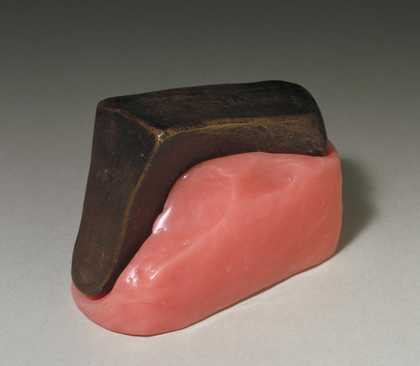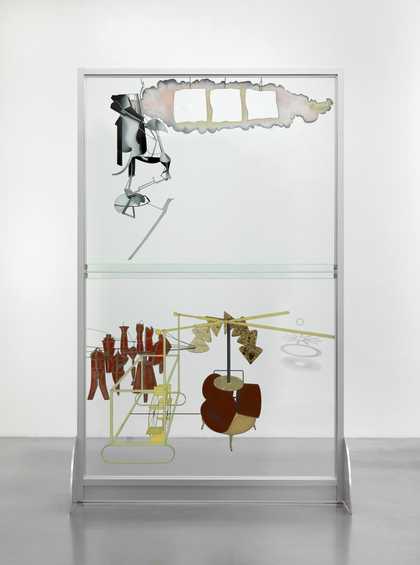For Marcel Duchamp, chess was almost everything. As his friend, the author Henri-Pierre Roché, noted: “He needed a good chess game like a baby needs his bottle.” It featured throughout his art career, from his early painting Portrait of Chess Players 1911 to Reunion, the performance/chess game he staged with John Cage in 1968 on an electronically prepared board. He loved its conceptual nature and its utter purposelessness, aspects that would have appealed to Man Ray and Francis Picabia. All three learned chess in their childhood and would share their passion for it throughout their lives.
Duchamp was taught chess by his brothers Raymond Duchamp-Villon and Jacques Villon in 1900 when he was thirteen. From 1910 there were regular Sunday games with the Puteaux group of Cubist artists – which included his brothers, and which Picabia joined a year later. When he moved to New York, Duchamp became a central figure in the late-night chess sessions at the Arensbergs’ regular salons. Here, his opponents included some strong players: the poet Alfred Kreymborg (a former chess pro), the psychiatrist Dr Ernest Southard and the art collector and critic Walter Arensberg.
For some, chess seemed to be more than a game. In 1917 Picabia and Roché played for the right to continue publishing their respective fledgling art magazines – Picabia’s 391 and Roché’s The Blind Man. Picabia won and The Blind Man closed after two issues. Duchamp was, without doubt, the most dedicated player of this group. In 1916 he joined the Marshall Chess Club in New York, and went often with Man Ray. “This is the part of my life that I enjoy the most,” he said. During his months in Buenos Aires in 1918, he took lessons from a top player. Several years later, in 1921, he wrote to Picabia declaring: “My ambition is to be a professional chess player.” And in 1923, while spending several months playing chess in Brussels, he wrote to his friend Ellie Stettheimer about his determination: “I am starting with the small nations – maybe one day I will decide to become French champion.”
Man Ray, while less gifted a player (he described himself as third-rate), incorporated the physical forms of chess into his art. He considered a grid of squares “the basis for all art… it helps you to understand the structure, to master a sense of order”. As well as his many chess set designs and photographs of chessboards, pieces and players (his 1928 shot of world champion Alexander Alekhine is especially haunting), he included imagery from the game in his painting and sculptures. For example, his mobile assemblage Obstruction contained 64 hangers hung in mathematical progression – 64 being the number of squares on the chessboard.
Picabia occasionally adopted chess themes, and his three works using 9 × 7 grids (especially Molecular Construction) show its influence on his art. But, like Man Ray, he did not have the necessary discipline for the game and was the antithesis of a theorist. That said, he talked about using his “creative spirit” to “improvise my painting as a musician does his music”. This description is analogous to creativity in chess: chess players and musicians often talk about theme, tempo, harmony, theory, composition, motifs, problems and intuition.
Of the three artists, Duchamp had the greatest motivation to achieve a modicum of success in chess. He was disciplined and self-absorbed. He was happy to work alone for long hours and days, which made studying the games of the great masters possible. He relished the theory and became a semi-professional for about ten years. And he did not like to repeat himself, something every chess professional must practise to a certain degree. Perhaps Duchamp was too enamoured with the mental process of playing – he did not have the required focus for competition. Still, the sensibilities of chess are found throughout his art, and his Chessmen 1918, Opposition and Sister Squares are Reconciled 1932 and Pocket Chess Set 1943–4 stand out among many of his works that honour the game.




